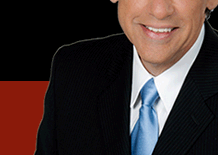|
Do you have questions you'd like to ask a news talent agent
Scott Orr? Just send them to Scott at info@thescottorragency.com
and he'll try to answer them in future columns here on HalEisner.com
If you're new to the business or in your first job and looking
for your second, you're probably agonizing over what you should
put on your resume tape. That's smart, because old-timers
aren't kidding when they tell you News Directors will give
you about 20 seconds to make them care about your tape. If
you haven't grabbed the ND's attention by then, the tape gets
ejected. In fact, even if you impress them, they still won't
necessarily watch the whole tape.
Is that fair? Doesn't matter. It's reality. From my point
of view it makes sense, though, because if you don't have
good enough stuff up front to keep your tape in the deck,
it's a sure bet the rest of the tape is no better.
The boss at WTVG, Brian Trauring, said he received 100 tapes
for a recent reporter opening and 300 for a sports opening.
That's your competition. How will you create a tape that is
different but still professional?
So because half the battle is getting News Directors to watch
your tape and NOT eject it, let's begin with what you should
leave off your tape:
-The station's newscast open. Unless you created it, and
you're applying for a Graphic Artist job, it's just noise.
-Color bars and tone. News Directors don't want to watch
this. (Would you?)
-A countdown. Not important.
-Talent other than you. There are many old stories about
the News Director putting a candidate's tape in the deck,
then looking at their co-anchor and saying, Wow! Who is THAT?
I want to talk to them!" If you use a toss (as a reporter)
or crosstalk (as on-set talent), make the other person's portion
as short as you possibly can.
-The "President Comes to Town" story you did last
year. The President comes to every town. Unless he was shot
while in yours and you have the shooting on your tape, and
you're in the frame, perhaps rendering aid to the President,
leave it off. Really.
And the worst thing you can put on the tape: a segment in
which you address the camera and introduce yourself to the
News Director. Second worst: having someone else, no matter
how well-known, do it for you. News Directors tend to see
this kind of material as amateurish, and certainly as a waste
of time--they want to know how you report by seeing some examples
of it, not by you telling them on the tape.
The jury's still out on montages at the top. If yours is
well done and includes several short standups that show off
what you do--which means walking, demonstrating, and so on,
especially during a liveshot--then yours may be useful. That
is, as long as the whole thing runs no longer than a minute.
But if your montage consists of shots of you standing still,
addressing the camera with a stick mike in one hand, you might
consider leaving the montage off.
Here, then, is what I would consider a well-produced tape
for a reporter looking for a second job:
-Black for 5 seconds or so to make sure you get past the
garbage part of the tape.
-A simple slate with your name and contact information. Don't
go overboard with this unless, again, you're applying for
a job as a CG Operator.
-The montage. Most ND's don't want a musical bed under the
standups, so keep that in mind.
-A good, solid breaking news story with a live element.
-A news-of-the-day story that shows what you can do under
the daily deadline.
-A feature, preferably NOT the "Day at the Fair"
story if you can avoid it.
-The package you believe is The Big One you've always wanted
to include on a resume tape.
And then a closing slate so the viewer knows the tape is
over, if they watched all the way through.
Put all this on a VHS cassette. While DVDs and CD-ROMs are
slowly beginning to become accepted, right now, they are more
trouble than a tape. Don't make your material difficult to
view. (Which is why any other tape format, unless specifically
requested, is a bad idea as well.)
Once you make your dubs, check them. Be certain the audio
and video stuck to the tape. ND's get an amazing number of
tapes missing one of those elements, and it's usually much
easier to move on to the next candidate than it is to call
you and ask for another copy.
Then cue the tape so it's about two seconds from first video.
You can also break out the record tab, not to keep someone
from recording over your masterpiece, but because it makes
most VHS decks go into play automatically.
Label the cassette with your name and phone number, but don't
put the tape rundown on it--no one can read the rundown once
the tape goes into the deck. Attach--as in "affix with
adhesive of some sort"--the rundown to the tape case.
Don't just send a loose card along--it will be lost instantly.
Don't expect your tape back if you're not hired. Don't expect
a rejection letter or call or even an e-mail. Sometimes you
get the tape back, and on occasion you'll get a written response
if you don't make the cut, but it isn't common.
You will probably send out a lot of tapes before you get
a bite, and 25 is not "a lot." I'm talking 75 to
100. When you need to send that much tape, you should be buying
it in bulk several on-line dealers offer cases of 50 30-minute
cassettes for about $30, and shipping is usually ten bucks
more, give or take. Put your tape in a padded envelope. The
Post office is rough on mail, and your plastic-shell tape
will arrive broken if you just stick it in a manila envelope.
Then mail your tapes for about $1.48 using USPS Media Mail.
Don't waste your money on Priority Mail or, God forbid, Overnight,
unless the ND specifically asks for a tape to be sent that
way. You'll go broke sending 100 tapes at $3.85 (Priority),
never mind $14 or more for Overnight service, which means
the tape gets to sit on the ND's stack for a couple of extra
days.
Many ND's don't even start to look at the stack until the
job's closing date. It may be a while until anything happens.
Be patient.
Finally this: If the posting says "No Calls," DON'T
CALL. Period. It doesn't make you look like a tenacious reporter;
it makes you look like someone who can't follow instructions.
If you must ask if the tape's been received (yes, they all
know that trick), try e-mail.
Those are the basics for a resume tape, but keep in mind
that this is a very subjective thing, and not everyone who
hires will agree with my comments.
Next time: The cover letter and paper resume.
-----
If you have questions you'd like Scott to answer just send
them to info@thescottorragency.com
|

















